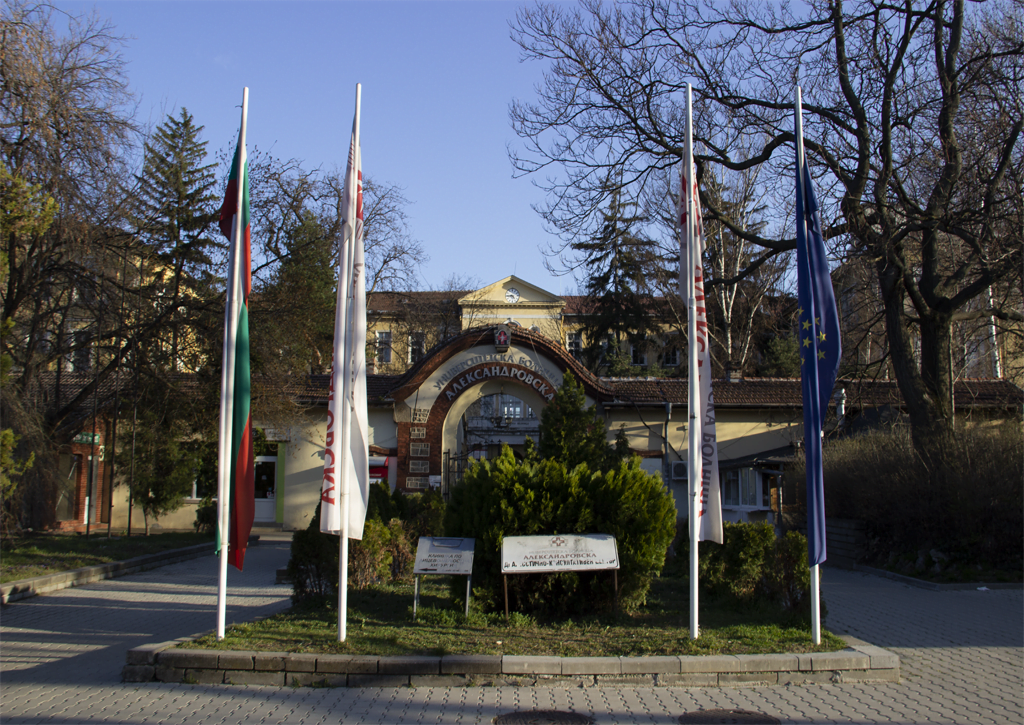Intro
The Medical University of Sofia is Bulgaria’s oldest higher education medical school. Its story began in the year 1917 when His Majesty Zar Ferdinand ordered the establishment of a medical school to educate and train professional doctors.
The institution now has nearly 800 professors and lecturers and more than 6,000 national and foreign students. The Medical University of Sofia is highly trusted for its supremacy in teaching medical sciences according to the country’s new university rating for 2015. Indeed, the university preserves the top seat in teaching Medicine, Dental Medicine, Pharmacy, Health Care, and Public Health.
Sofia Medical University is now one of Bulgaria’s most prominent medical institutions. It provides students with Erasmus+ programs and follows the European Credit Transfer System. During the last 20 years, more than 140 Erasmus Interinstitutional Agreements have been signed with partner universities from 33 different countries. This puts the Medical University of Sofia on the map of international students.
Institutional accreditation has been granted by the National Evaluation and Accreditation Agency. Needless to say, the Sofia Medical University’s degrees are recognized internationally and within the European Union because Bulgaria is already a member of the European Union.
Location
The university is located in Sofia, which is home to several of Bulgaria’s major universities, cultural organizations, and economic enterprises. Sofia is Bulgaria’s capital and largest city with a population of over 1.2 million inhabitants, which makes it the 15th biggest city in the European Union. The city is located in the western region of the country, at the foot of Vitosha Mountain, fewer than 50 kilometers from the Serbian border. It lies halfway between the Black Sea and the Adriatic Sea in a central location on the Balkan peninsula.
History
Sofia Medical University is Bulgaria’s oldest higher medical education school. In 1917, His Majesty Tsar Ferdinand established it as a medical faculty of Sofia University by an executive order. Three assistant professors founded the dental department in 1942. Many professors and lecturers collaborated to make Alexandrovska hospital a suitable place to train the university’s students. The history of the university can be summarized as follows: In 1917: His Majesty Ferdinand I of Bulgaria signed a decree to establish the Medical Faculty of Sofia University. In 1925: The institution published one of the earliest periodicals for medical students in the world: “Premedicus”. In the WWII period: the faculty was transformed into a distinctive medical college with both a medicine and a dentistry faculty. In 1950: The Presidium of the National Assembly passes a decree to separate the Medical Faculty from the University of Sofia and give it the name of a “Medical Academy”. In 1951: The School of Pharmacy was created and became a medical university in 1995. In 1954: The Medical Academy changes its name to the “Higher Medical Institute”. In 1995: The Higher Medical Institute is renamed the Medical University. Today’s period: Sofia Medical University becomes a beacon of knowledge and historic significance in the Balkan area and throughout Europe.
Faculties
Sofia Medical University has four education faculties: Medicine, Dental Medicine, Pharmacy, and Public Health faculties. The Central Medical Library, the Medical College for paramedic education, and the Language Training and Sports Center are all located on the campus of the university. To provide high-quality training for their students, the management has successfully allocated around 13 university hospitals. Since its inception, more than 10,500 international students from over 80 countries have been graduated from the four faculties.
The university held prominent achievements in many medical subjects, including neurosurgeries, ophthalmic surgeries, cardiothoracic surgeries, high-tech diagnostics, inherited diseases prevention, and bone-marrow transplantation. the Medical College for paramedic education provides graduate studies in programs such as assistant pharmacy, dental and X-ray sciences, and social work.
Student life & Living costs
Studying at Sofia Medical University brings with it several benefits for students who care much about campus activities. First, its location in the country’s capital allows students to use Sofia Airport, Bulgaria’s largest international airport. Many airlines can take you directly to Sofia, and for foreigners who pick Bulgaria as their study abroad location, transport is a highly significant matter that requires accurate consideration.
If you want to study abroad in Bulgaria, Sofia is one of the greatest cities to reside in. It has sophisticated retail malls, foreign restaurants, cozy study cafés, sports facilities, and attractive museums and galleries. Sofia Medical University is located in the heart of the city, close to some of the city’s most popular tourist attractions, such as the National Palace of Culture and the major pedestrian strip. Yuzhen Park and Borisova Garden, two of Sofia’s most prominent parks, are also close to the university. After a long day at the university, students can go out and enjoy the city with all its colors and details.
Furthermore, the capital city has the greatest number of sports activities, international events, and enterprise opportunities that may provide students with part-time work.

